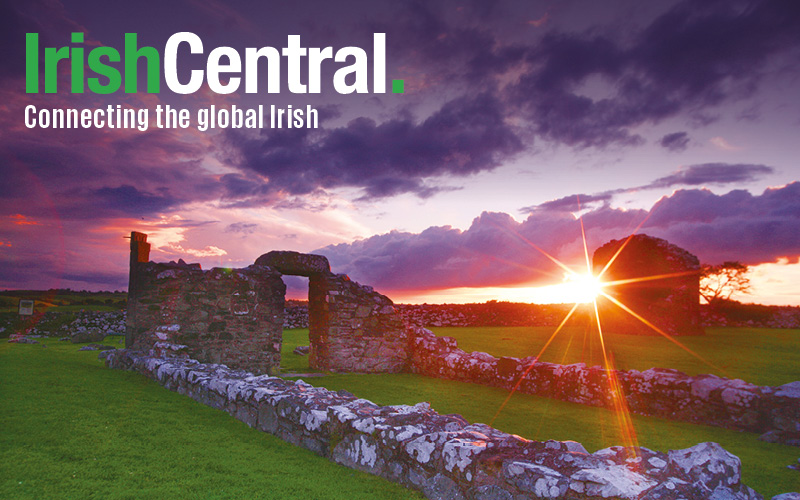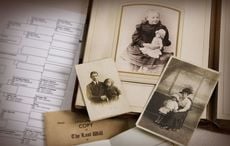With the popularity of such TV shows as “Finding Your Roots” and “Who Do You Think You Are?” it’s not surprising that one of the busiest government offices in summertime in Dublin is packed with Americans. That office? It’s the General Registry Office on Werburgh Street.
Why?
Because the search for that elusive granny or spinster aunt can start—and end—here. For here are located all the birth, death and marriage certificates of Ireland going back over 150 years. The diaspora has left many Irish with a thirst for knowledge about their forgotten forefathers. The success of such websites as Ancestry.com and FindMyPast.com has made it more popular than ever to track down long, lost relatives.
Of course, these genealogical websites are subscription sites, but you can find almost everything you need to know for free or for a nominal fee on the five sites/locations I have listed below. (Note: Before you start, gather as much information as you can about your relative: town/county, birth, baptismal, death, marriage, and passport information.)
Step One: The Irish Censuses of 1901 and 1911
The National Archives of Ireland provides many important services—all of them FREE!
Foremost among these services are the Censuses of 1901 and 1911, the last surviving censuses administered by the British government. You can access both censuses at: http://www.census.nationalarchives.ie/. All counties, including those of Northern Ireland, are included. Besides these two complete censuses there are also fragments for various counties in the censuses of 1821, 1831, 1841 and 1851.
The information provided includes names, addresses, occupations, religion—the two most popular designations are Church of Ireland (COI) and Roman Catholic (RC)—literacy (“can read and write”), whether Gaelic (referred to as “Irish” in Ireland) is spoken, and number of children born alive. The form is signed by the head of the household, perhaps giving you a first look at the penmanship of your great-great-grandfather.
Step Two: Parish Records
Another invaluable service provided by the National Archives is the Parish Records, with free access available at: http://www.irishgenealogy.ie/. Parish records include baptismal and marriage information and to a lesser extent, death information.
The National Library of Ireland also supplies free online parish records which include marriages and baptisms at: http://www.nli.ie/en/parish-register.aspx. These are photographed pages from the parish record books. They can be very hard to decipher, but they may contain information not on other sites. (I recently found my great-grandparents' marriage at St. Michael & John’s Church in 1862 in the Temple Bar district of Dublin. This information would not have been available through civil records because the recording of Catholic birth/death/marriages did not begin until 1864.)
If you visit the National Library in person (http://www.nli.ie/en/genealogy-advisory-service.aspx; located in Dublin at 2/3 Kildare Street, just down the street from the Shelbourne Hotel and next to Leinster House) you can also view microfilm copies of Catholic Parish Registers and the Tithe Applotment Books; online access to Griffith's Primary Valuation of Property and many printed resources such as newspapers and trade directories.
The Genealogy Advisory Service is available free of charge to all personal callers to the Library who wish to research their family history in Ireland. (Check website for seasonal hours and other genealogical services.)
Another excellent, free service, provided by the Mormon Church, is called Family Search (https://www.familysearch.org/) which claims to be “The World’s Largest Genealogy Organization.” It is through this service that I found the birth and death dates of many of my relatives, which I later turned into birth/death/marriages certificates in Dublin.
Step Three: Cemeteries
If you know where your people are buried, cemeteries can contain a wealth of family information, specifically, birth and death dates on headstones. More detailed information can often be found in records located in cemetery offices.
In Dublin the Glasnevin Trust Museum—the first museum dedicated to a cemetery in the world—offers a fascinating look at Ireland’s foremost cemetery (take a taxi or the #9 or #83 bus from the city center—a fifteen minute ride—and ask the driver to let you out near the cemetery). The museum Walking Tour commences daily at 11:30, 12:30, 1:30 and 2:30. The charge is $9 (€8). The tour includes entrance into Daniel O’Connell’s tomb (it is considered “lucky” to touch his coffin), a visit to the appropriately named “Republican Plot” where many famous Irish revolutionaries are buried, plus visits to the graves of patriots Eamon de Valera and Michael Collins. And during 2016, the centennial of the Easter Rising, the museum will also have a 1916 Rising Tour. The tour starts at 9:30, 3 and 4. Prices and packages range from $9 to $28 (€8 to €25 - check the website for more details).
But the biggest service offered by the Glasnevin Trust is its fantastic website (http://glasnevintrust.ie/), which gives access to the names of almost all who have been buried at Glasnevin from 1828 to the present. A preliminary search is free and a detailed search of the grave is available for €3-8. This service is invaluable because it will provide you a list of everyone in a particular grave. Often, names were not recorded on the headstone.
Step Four: General Register Office Research Room
The bad news is that GRO Research Room is not Internet friendly (only rudimentary information is available at: http://www.welfare.ie/en/Pages/General-Register-Office.aspx/Pages/VariationRoot.aspx). The good news is that if you go there they have all the information you’ll ever need.
How to find it: The General Register Office Research Room of the Department of Social and Family Affairs is located on Werburgh Street, near Christ Church Cathedral. It is hidden down an alley.
Follow these directions: Across from Christ Church, at the corner of Werburgh Street, is the Lord Edward pub/restaurant. Next to the Lord Edward is Leo Burdock’s Fish & Chips. Cross the street here and you are in front of St. Werburgh’s Church of Ireland, where Lord Edward Fitzgerald is buried. To the right of the Church is the Parish Office. To the right of the Parish Office is an alley. At the end of the alley is a sign declaring “Oifig an And-Chlaraitheora”—the General Registry Office. Hours are daily, 9:30 a.m. to 4:30 p.m. Once inside, you will have access to all births/deaths/marriages in Ireland from 1864 onward (non-Catholic marriages from 1845).
It is not cheap, but reasonable for the information provided: $22 (€20) for a day-long search of all the indexes (particular search is $2/€2). Once you find your relative there is a $4.50 (€4) certificate photocopy fee with a maximum of five photocopies per person per day. The staff is extremely professional and helpful. Your photocopy will be brought to you within 10 minutes. Instant genealogical gratification!
(Note: birth/death/marriage certificates often contain additional information—i.e., what relative was present at death—which may serve as additional genealogical clues. This is how I found my great-Uncle Charles Conway, who I had never heard of. He was present at my great-grandmother’s death in 1909 and I was able to find him listed in the 1911 census with an occupation of “brewery policeman.” This led me to the Guinness Archives, see below.)
Step Five: Irish in the British Military and the Guinness Brewery
Many Dublin Irish joined the military from the 19th century through the Great War. My great Uncle Charlie Conway (my maternal grandmother’s brother) was one of these men. He served twenty years in the British military and he also worked at the Guinness Brewery as a policeman for thirty years and is a member of Guinness’ Honour Roll of Employees who served in His Majesty’s Naval, Military and Air Forces, 1914-1918.
An invaluable resource for research on men who joined the British Army during the First World War is the Royal Dublin Fusiliers Association (www.greatwar.ie). The service is run by Seán Connolly who has great knowledge of the Royal Dublin Fusiliers during World War I. The regiment was one of the five from Ireland disbanded by the British Army in 1922 following the signing of the treaty in December 1921 which created the Irish Free State.
Another source of information is the Guinness Archive (http://www.guinness-storehouse.com/en/GenealogySearch.aspx). If you had a relative who was an employee of Guinness it is possible to make an appointment to view their employment record. (I found that my great-Uncle Charlie won first prize for keeping his uniform in good order during 1904. On the other hand, on June 10, 1910 he was “Found asleep when on duty at the basement stairs of Market Street Storehouse. Severely reprimanded by Mr. Phillips.”) The Guinness Archives are located at the Guinness Storehouse—which, ironically, was Uncle Charlie’s beat—off James’ Street, the same building where the Guinness tour and Gravity Bar is located.
---
Dermot McEvoy is the author of the The 13th Apostle: A Novel of a Dublin Family, Michael Collins, and the Irish Uprising and Irish Miscellany (Skyhorse Publishing). He may be reached at [email protected]. Follow him at www.dermotmcevoy.com. Follow The 13th Apostle on Facebook at https://www.facebook.com/13thApostleMcEvoy/




Comments